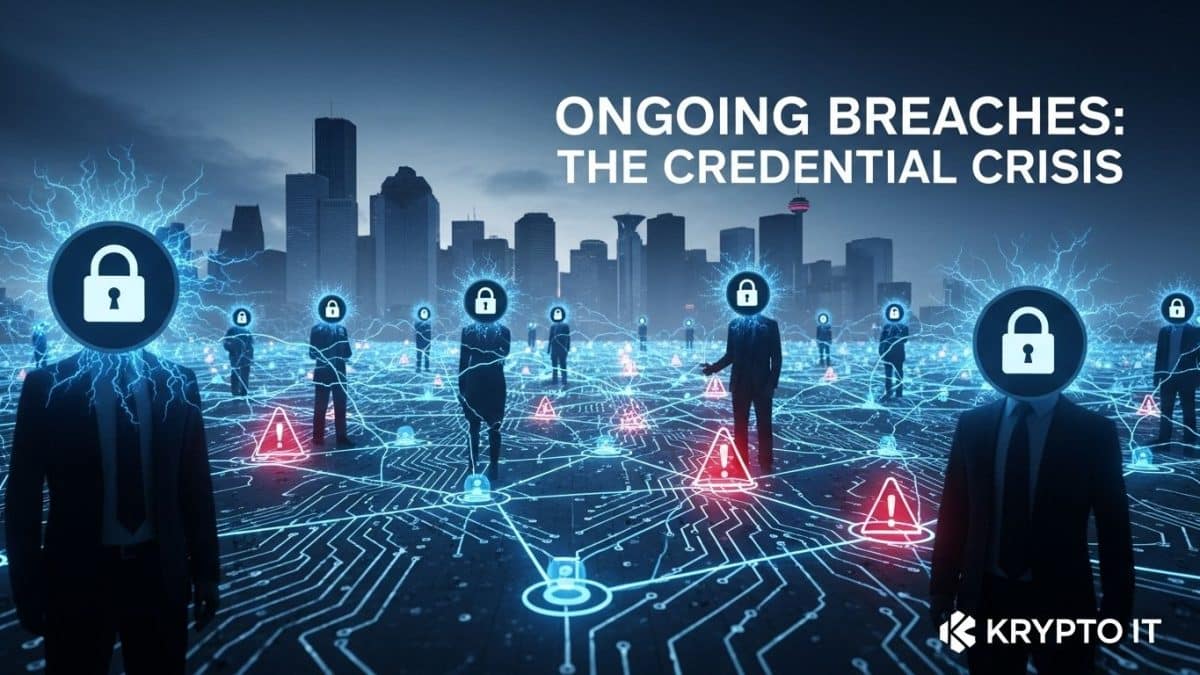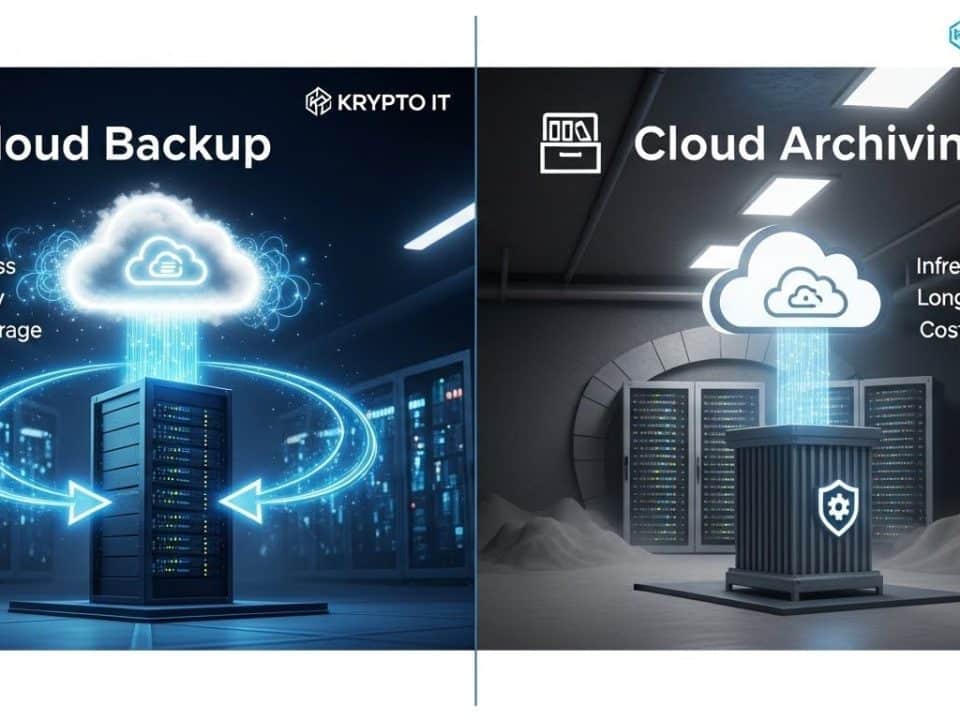
Beyond the Obvious: Job Scams & Fake AI Tools
June 18, 2025
OT Under Attack: Ransomware’s Industrial Surge
June 20, 2025Why Your Login Details Are Cybercriminals’ Gold Mine
Despite all the headlines and investments in cybersecurity, data breaches are a relentless reality. They are not isolated incidents but a constant, evolving threat that impacts businesses and consumers daily. Recent high-profile incidents, such as customer data being stolen from North Face and Cartier through “credential stuffing” attacks, and a hacker leaking hundreds of thousands of Samsung customer records, serve as stark reminders that no organization, large or small, is immune.
For Small and Medium-sized Businesses (SMBs) in Houston, understanding these ongoing breaches isn’t just about reading the news; it’s about recognizing the pervasive risk to your own customer data, your operational integrity, and your reputation. These incidents often highlight fundamental vulnerabilities that, if left unaddressed, can devastate an SMB.
The Pervasive Threat: How Data Breaches Keep Happening
Data breaches continue to plague the digital landscape due to a combination of factors:
- Exploiting Human Nature (Social Engineering): As discussed in previous posts, phishing and social engineering remain incredibly effective. They trick employees into revealing credentials or installing malware, directly bypassing technical controls.
- Software Vulnerabilities: Unpatched software, misconfigurations, and zero-day exploits in operating systems, applications, and network devices provide direct entry points for attackers.
- Weak Access Controls: Insufficient authentication methods (e.g., lack of Multi-Factor Authentication), weak passwords, or overly permissive access rights make it easier for unauthorized individuals to gain entry.
- Supply Chain Risks: Breaches at third-party vendors or suppliers (as seen in the Samsung leak, which may have originated from a third-party rather than Samsung directly) can cascade down, impacting numerous client organizations.
- Credential Stuffing: This is a particularly insidious and common method behind many recent breaches, including those affecting North Face and Cartier.
Understanding Credential Stuffing: The Silent Epidemic
Credential stuffing is an automated cyberattack method where attackers use lists of username/password combinations, typically obtained from previous data breaches on other websites, to attempt logins on different websites or applications.
Here’s how it works:
- Data Acquisition: Cybercriminals compile vast databases of stolen credentials from past data breaches. For example, if a user’s account on a lesser-known forum or a gaming site is breached, their username and password from that breach are added to the list.
- User Behavior Exploitation: The core of credential stuffing relies on a common, yet dangerous, user habit: password reuse. Many people reuse the same username/password combination (or slight variations) across multiple online services.
- Automated Attacks: Attackers use automated tools and bots to “stuff” these compromised credentials into login forms on thousands or even millions of websites (e.g., e-commerce sites, banking portals, social media platforms).
- Successful Logins: When a reused password matches, the attacker gains unauthorized access to the victim’s account on the new site.
- Monetization: Once inside, attackers can:
- Steal personal data (credit card numbers, addresses, phone numbers).
- Make fraudulent purchases.
- Access loyalty program points or gift cards.
- Exfiltrate even more sensitive data for sale on the dark web.
- Leverage the compromised account for further social engineering or phishing attacks.
The North Face and Cartier incidents were classic examples of credential stuffing. Attackers didn’t breach these companies’ systems directly; they used credentials stolen from other platforms to log into customer accounts on these popular brand sites.
The Samsung Data Leak: A Reminder of Broader Risks
The recent leak of 270,000 Samsung customer records, reportedly by a hacker, underscores another facet of ongoing breaches: the sheer volume of data involved and the varied entry points attackers use. While details surrounding the Samsung leak might still be under investigation regarding the precise vector, such incidents often point to:
- Vulnerabilities in IT Infrastructure: Exploited flaws in web applications, databases, or servers.
- Third-Party Compromise: A breach at a vendor or partner that had access to Samsung’s customer data.
- Insider Threats: Malicious or negligent insiders leaking data.
Regardless of the specific cause, the outcome is the same: customer data (which can include names, emails, addresses, purchase history, and more) is exposed, leading to privacy violations and potential fraud for affected individuals.
The Impact on Houston SMBs
For SMBs, even if you’re not a global brand like North Face or Samsung, these ongoing breaches have direct implications:
- Your Customers Are Targets: If your customers reuse passwords, their accounts on your website or service could be compromised via credential stuffing from a breach elsewhere.
- Reputational Damage: A data breach involving your customer data, regardless of its origin (credential stuffing, direct hack, third-party), can shatter customer trust and severely damage your brand. In today’s competitive landscape, this can lead to customer churn and make new customer acquisition extremely difficult.
- Financial Fallout: Costs include investigation, remediation, legal fees, regulatory fines (if sensitive data is involved), and potential lost revenue from business disruption. Studies show that a significant percentage of SMBs fail within six months of a major cyberattack.
- Supply Chain Vulnerability: If you rely on vendors for customer data management, CRM, or e-commerce, their security posture directly impacts yours.
Protecting Your Houston SMB from Ongoing Breaches
While the threat is constant, SMBs can implement effective strategies to minimize their risk:
- Mandate Multi-Factor Authentication (MFA): This is the single most effective defense against credential stuffing. Even if an attacker has a correct username and password, they cannot log in without the second factor (e.g., a code from an authenticator app, a fingerprint scan). Make MFA mandatory for all internal systems, customer accounts where possible, and especially for any administrative access.
- Enforce Strong, Unique Password Policies: Encourage or enforce the use of strong, unique passwords for all employee and customer accounts. Promote the use of password managers.
- Implement Robust Bot Management and API Security: Use solutions that can detect and block automated credential stuffing attacks, identifying suspicious login patterns or unusual traffic volumes.
- Regular Vulnerability Assessments & Patch Management: Continuously scan your systems for vulnerabilities and apply security patches promptly.
- Educate Employees on Credential Hygiene: Train your employees on the dangers of password reuse, recognizing phishing attempts that aim to steal credentials, and the importance of MFA.
- Monitor for Leaked Credentials: Consider using services that monitor the dark web for compromised credentials associated with your domains or employees and alert you so you can enforce password resets.
- Vendor Risk Management: Thoroughly vet the cybersecurity practices of all third-party vendors who handle your data or have access to your systems. Ensure they have strong security controls and incident response plans.
- Comprehensive Incident Response Plan: Have a clear, tested plan for what to do if a breach occurs, including communication protocols, containment, and recovery steps.
Ongoing breaches are a stark reminder that cybersecurity is not a one-time fix but a continuous process. For Houston SMBs, understanding prevalent attack methods like credential stuffing and the broad implications of data leaks is essential for building resilient defenses. Krypto IT is here to help your business navigate these persistent threats and secure your most valuable assets.
Contact us today to schedule a free consultation and ensure your business isn’t the next headline.




